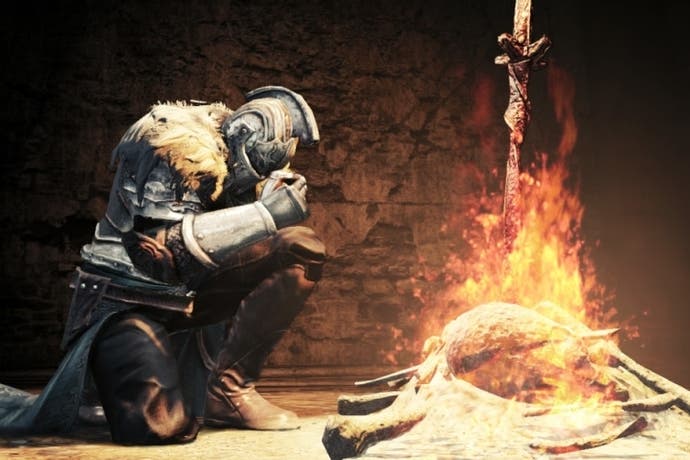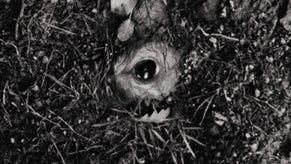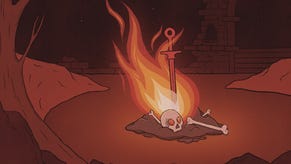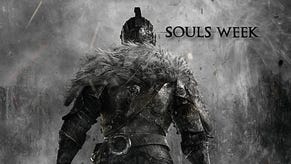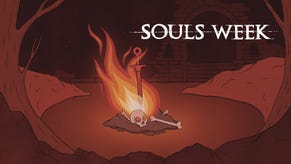Dark Souls 2 review
Praise the son!
From Software's Dark Souls was a masterpiece with a deceptively hope-filled heart - celebrated for its bitterness and hostility and still played today because of its extraordinary world design, sublime combat and enigmatic systems. But while it was more successful than its predecessor Demon's Souls, many people still found it too intimidating. Working under new directors, the developers of Dark Souls 2 have tried to bridge that gap while remaining faithful to the series' strange heart. Can it be done?
True to the brief, this is still a tough, often brutal role-playing game that requires intense concentration and persistence, but it sets about its business with more equanimity. Dark Souls dropped boulders and bosses on your head before you could get your bearings, but Dark Souls 2 has a gentler starting area, where threats are obvious and instructions are spelled out on tombstones. It then sets you down in the hub town of Majula, where you can rest at a bonfire and speak to a small band of locals.
There are bonfires throughout the world of Drangleic, where Dark Souls 2 is set, and like Dark Souls they let you rest and recover your health and estus flask healing potions, but you return to the one in Majula very often because it's the only place you can level up. You do this by speaking to a mysterious woman, who then tells you to seek the king and hunt down great souls. That's about as much direction as you ever receive in a Souls game, but these inscrutable comments are delivered warmly, and amidst the long shadows cast by a sun that never quite sets, Majula is bright and strangely welcoming.
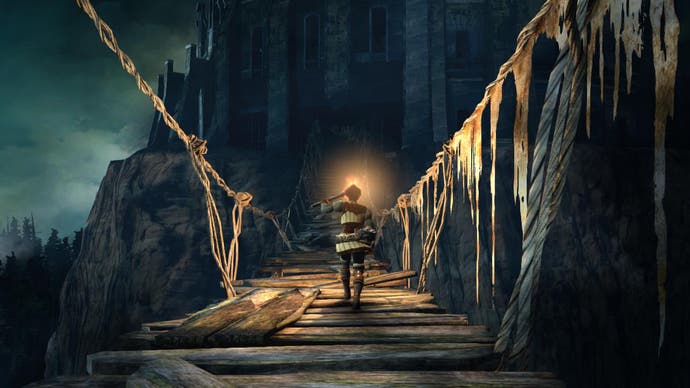
In many ways, so is the game itself, although you will still need to get a handle on its wonderfully tactile medieval combat if you plan to get very far in it. It's all blocks, thrusts, stamina and timing, and it's crucial to move around cautiously, always on your guard, careful of your footing, because dying is a punishing business. It returns you to the last bonfire, which may be some way away, but it also revives your enemies and strips you of your souls - the game's experience points and currency. You can re-gather them by retracing your steps, but another death means you lose them forever.
So it was and so it remains, but this time there are twists. The first big difference is that enemies only come back to life a certain number of times, meaning that progress through even the most difficult location is inevitable as long as you keep plugging away. That probably sounds perverse to experienced Souls players, who expect the same fierce challenge whenever they rise from a bonfire anywhere in Dark Souls' Lordran, and it does remove some of the mystique from early areas if you grind them to near emptiness. But it pays its way over time, allowing you to defang the path from bonfire to boss fight rather than having to fight or run for your life every time - and there are so many secrets buried in Drangleic that any fear of knowing it too intimately quickly dissipates.
It's also trivial to return to Majula, because you can now fast-travel to and from any bonfire in the game once you discover it. This feels a little cheap to begin with, but it has allowed the designers to think a lot bigger with the game world. Rather than a single, tightly constructed space that corkscrews back on itself like Lordran, Drangleic is a sprawling world of larger locations that benefit from the extra legroom. Places like No Man's Wharf, a dark and captivating smuggler's village strewn extensively over the inside of a giant cave, can stare out beyond a ghostly pirate ship onto a moonlit ocean rather than having to tuck themselves into the margins of other settings.

Dark Souls 2 takes you to a lot of other dark places, too, but a surprising amount of the game is bright, or at worst crisp and wintry, and this often gives it a more wistful, haunted atmosphere than the sharp, acidic snarl of Dark Souls. The Forest of Fallen Giants and several neighbouring woodland areas are well illuminated, while Heide's Tower of Flame, a half-sunken outcropping of beautiful limestone cathedrals, bakes away under the evening sun. It's often bright enough that a new torch system that encourages you to light fires in dark places - at the cost of having to sheathe your off-hand item - seems redundant.
Not everything new is friendly, mind you. As is tradition, you start the game in an undead state, but dying repeatedly now brings down your maximum health by a sliver every time. You can restore your humanity and health capacity by using a special item - now called human effigy - but effigies are rare. Your health won't drop beyond a certain point, but the decline is a worrying constant in the early hours when effigy is scarce, and it's only once you level up significantly that it becomes less of an issue, allowing you to move around with an incomplete health bar most of the time and save effigies for special occasions.
There's still a healthy amount of the old game's spite doing the rounds, then - like pressure-plate traps and enemies hidden to catch you out - but the Dark Souls games also like to telegraph their challenges as well as startling you with them. You often catch sight of a number of tough enemies at once, arranged in threatening combinations that will leave you exposed if you rush your attacks, so you have to figure out how best to isolate them or handle the group, and it's in these situations that you really cut your teeth on the game, learning how to be economical with your stamina and which weapons suit your style.

Getting the hang of Dark Souls 2 is complicated by the same obtuse levelling system used in its predecessor, offering little direction as to which attributes will complement the character class you've chosen. But you level up faster now, so it's easier to play around with your options, and as long as you make sure to upgrade your weapons as well then you should always be well equipped. Magic users aren't left behind either - they can now wield light, heavy and two-handed variations on the same spells, it feels like there are many more spell drops, and they can use bonfires to swap spells as required. Whatever your class and approach, it's all very rewarding, and there's a lot of exotic loot lying around Drangleic waiting to make things even more interesting, including the usual assortment of status-changing rings, stones for use in smithery and unique armour sets.
While the gradual thinning out of enemies in tough areas means Dark Souls 2 can be a little less intense at times, you still need to bring all your skills and mental strength to bear when you step through the fog doors that lead into boss fights. The Souls games have a celebrated history of ferocious boss enemies and Dark Souls 2 is determined to keep up the family name, often shaking you to the foundations of your character spec when you happen upon a new encounter, forcing you to comb your stats and inventory for important tweaks that may have eluded you up to that point.
Describing these monstrous adversaries would spoil the surprise, but they represent some of the best and most intense experiences in Dark Souls 2. Many games are about levelling up in your head over successive attempts to resolve challenging situations, but that sensation is electrifyingly acute in the shadow of a Souls boss because of the tiny increments by which you measure progress. I need to be patient. I need to stay close. That's the key attack. Now. The sense of elation on overcoming some of these enemies, who seem utterly impossible on first contact, is something I've only known in this series. My only slight criticism is that the new class lack the poetic names of their ancestors Moonlight Butterfly, Ornstein and Smough or Sif, the Great Grey Wolf.
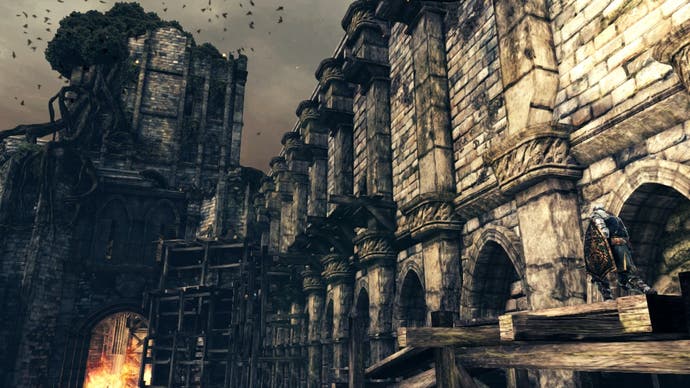
They put up the same fight, though, and it's at times like these that you appreciate the wider scope of Drangleic and your ability to get around faster. There are a lot of bosses in the game and it can be a little exhausting at times, but as long as you keep your eyes open, speak to everyone you meet and keep track of things you haven't done yet, you should always have a few routes open to pursue. At one point I walked through a fog door praying it wasn't another boss and it was three of them - and I just wasn't in the mood, so I went off and spent 10 hours doing other things.
More than the disappearing enemies or fast-travel, it's this knowledge that you can always push forward in several directions that makes Dark Souls 2 slightly more accessible, although the reality is you will still miss things, get lost and get stuck, and it's here that the series' famous bridges between game worlds come in handy. You can still scribble little notes on the ground to warn other players of impending peril or comfort them with news they're close to sanctuary, while bloodstains still activate silhouettes that offer a clue to how another human player in a parallel world came unstuck in this vicinity.
There are real-time bridges now too, phantasmal images of other players resting at the same bonfire or fighting down the same corridor, and while these may not offer tactical assistance, they provide moral support. For me, though, the most welcome link had nothing to do with the game systems: I was texting back and forth with other reviewers as I played, sharing tips and encouragement; I really recommend you play Dark Souls 2 at the same time as friends, because the excitement and tension is too special to keep to yourself.
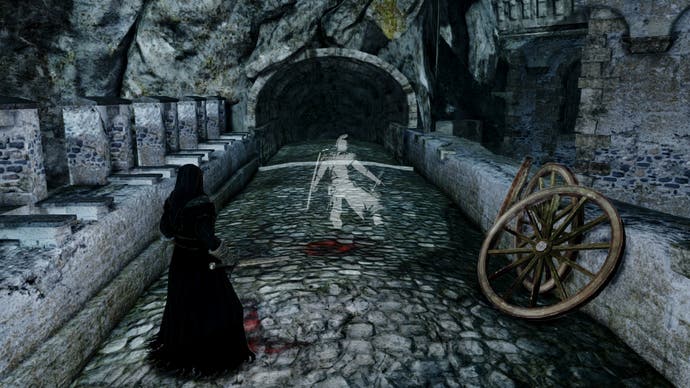
Either way, make sure you play it, because Dark Souls 2 is in a class far beyond most other RPGs. Its gloomy crypts, haunted forests and burning fortresses are plumbed into the foundations of the world with the same carefully appointed detail as anything else in the Souls canon, sparingly direct about their history and intentions so that you piece what story you can together from scraps. It's full of startling and confounding moments, enigmatic systems and items that will only make sense over multiple playthroughs, and it is certainly a game you can hope to play and talk about for a long time to come.
Overall, Dark Souls 2 probably isn't quite the same masterpiece Dark Souls is, but then neither is anything else, and the fact it comes so close is remarkable. From Software has delivered on its goal of opening the game up a bit to more daunted players without breaking the heart of Souls, and Drangleic belongs in the same conversation as Lordran for any number of reasons - but this is still an iterative sequel, so many of the old routines and patterns of discovery inevitably sparkle a little less the second time around.
Only a little, though, and when the worst you can say is that a game is only nearly as good as Dark Souls, that's still a pretty strong recommendation.
If you're playing the game for yourself and have come a cropper, take a look through our Dark Souls 2 guide.
